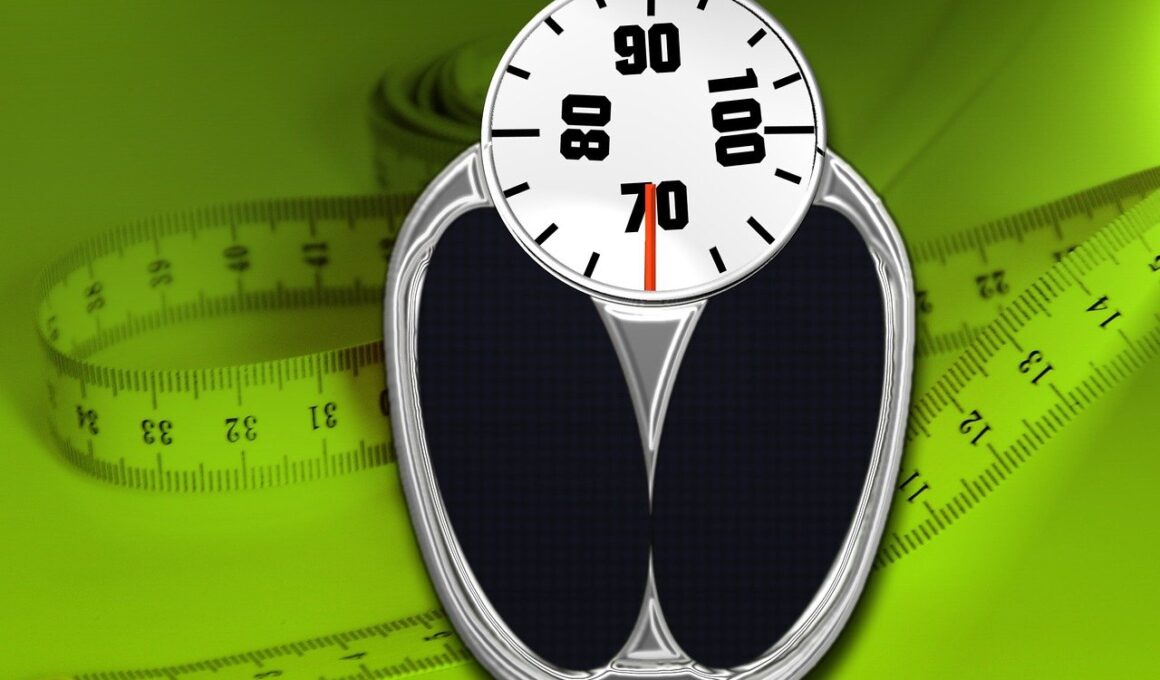How to Sync Your Diet and Exercise Apps with Smart Scales and Trackers
Integrating your diet and exercise apps with smart scales and trackers can significantly enhance your weight loss management journey. This synchronization brings together vital data about your nutrition and physical activity, making it easier to manage your overall health. To begin syncing, ensure that your smart scale, fitness tracker, and mobile apps are compatible. Most popular apps nowadays, such as MyFitnessPal and Fitbit, offer seamless integration with various devices. Always check for compatibility on the respective websites. Next, physically connect or enable Bluetooth functionality on your devices to establish a link. This allows data such as weight, body fat percentage, calories burned, and nutritional intake to flow effortlessly between the devices. After successful pairing, set notifications and reminders within the apps to keep you on track with daily goals. Regularly reviewing your progress will also provide insights into trends and areas for improvement. Many apps even offer personalized feedback, encouraging a more tailored approach to your health journey, making it a much more interactive experience overall. Tracking, diet, and exercise can effectively align with the technology you choose, so choose wisely according to your needs.
Accountability is key in any weight loss program, and utilizing technology can provide that necessary support. With smart scales and fitness trackers, your accountability can extend beyond your personal commitment. When you sync these devices with diet apps, you can easily share your progress with friends or health professionals. This social connectivity can foster an encouraging environment, motivating you to stick with your fitness and dietary goals. Moreover, tracking your diet manually can be tedious, but these technologies simplify the process. Smart scales automatically capture weight and sync it to your app, while fitness trackers log calories burned without needing manual input. Some apps also come with barcodes scanners, allowing you to easily log food items when cooking or shopping. The more efficiently you log this data, the better you can analyze your habits and make informed decisions. On top of that, many apps offer guided meal plans and exercise programs personalized to your goals. Consequently, these resources provide a structured approach, making it easier to adhere to a calorie deficit if weight loss is your aim or a calorie surplus in case you are trying to gain weight sustainably.
The Role of Data Analysis
Data analysis can play a crucial role in your weight loss journey when utilizing smart scales and diet-tracking apps. By analyzing your weight trends, activity levels, and caloric intake over time, you can make better decisions regarding your diet and exercise regimen. Most apps will generate reports and visualizations, enabling you to spot patterns that you might not notice otherwise. For instance, you could determine whether certain meals correlate with weight loss and adapt your diet accordingly. Furthermore, tracking your daily steps alongside your nutrition can direct your attention to the relationship between physical activity and caloric intake. When you assess your exercise-related data, remember to also take note of how many calories you consume versus how many you burn each day. If you find that you’re not achieving your desired results, this data can help trace back which changes might need to be made, whether that’s adjusting your meal portions, changing up workout routines, or even altering your lifestyle habits. Bottom line, effective data analysis is a step closer to achieving your weight loss goals, driven by informed decision-making.
A comprehensive understanding of macronutrients is indispensable when syncing apps to track diet and exercise. While monitoring weight and calories is vital, knowing the role of proteins, carbohydrates, and fats can optimize your nutritional approach. When selecting a diet app, make sure it offers detailed nutrient breakdowns. High-quality applications will allow you to log not only your caloric intake but also detailed macronutrient ratios. For instance, if you’re focusing on high protein intake, the app can provide recommendations on food choices while taking your preferences into account. Additionally, setting up objectives in the app based on your metabolic rate can guide you toward achieving specific results. Regularly checking your goals and the nutrition you are consuming daily creates a proactive approach to your dietary habits. Assessing the synergy between what you eat and your exercise routines can significantly influence your metabolic function and weight management outcomes. The clearer the picture is, the better decisions you can make daily, optimizing your journey toward health. Therefore, equip yourself with quality tracking apps that allow thorough monitoring of these essential macronutrient ratios.
Integration with Other Health Apps
For maximum efficiency in tracking weight loss, consider integrating diet and exercise apps with other health-related software. Many users overlook the potential benefits of syncing multiple applications that focus on different aspects of health. For example, if you regularly monitor your sleep quality, integrate that data with your dietary and fitness logging. Sleep plays a vital role in weight management, and understanding its connection with diet and exercise can reveal significant insights about your overall health. With every piece of data gathered from various sources, a comprehensive overview of your lifestyle forms. By analyzing the data collectively, you might find that poor sleep leads to increased cravings or decreased energy for exercise. Moreover, mental health apps that track your mood can also provide valuable data. Stress and mood can influence your eating behaviors and energy levels for workouts. Utilize these integrations to create a cohesive picture of your health journey. This integrative approach encourages not only physical changes but also enhances mental well-being, making it a holistic way of tracking weight loss and management.
To increase your success rate, continually educate yourself about features available in diet and exercise apps as technology evolves rapidly. New applications are frequently developed, and ongoing advancements in existing platforms may offer previously unavailable functionalities. Periodically reviewing updates can help you leverage advanced tools significantly enhancing your tracking experience. For instance, some apps are introducing machine learning algorithms that analyze your data better by providing personalized feedback. These features can keyword in on specific trends within your weight loss journey, thus delivering recommendations that fit your unique profile. Additionally, some devices now come with advanced biofeedback features showing how your body reacts to certain foods or exercises in real time. Engaging with community forums or reading reviews can also yield insight into which features work best for users in similar situations. When users actively share their experiences often manifest new use cases, resulting in better strategies. Keeping abreast of features can empower you and can continue to motivate you throughout your weight loss and fitness journey. Utilize the ecosystem of apps to your advantage and explore all the possibilities available to you.
Setting Long-term Goals
Setting long-term weight loss goals is essential when syncing your diet and exercise apps for effective tracking. To enhance motivation, establish short-term milestones that eventually lead to larger targets. Being realistic about your expectations helps create a balanced approach to personal progress. While ambitious goals can fuel motivation, gradual changes tend to yield a higher success rate in the long run. Real-time data from your synced devices can act as accountability tools that encourage you to stick to your fitness regime. Utilize the techniques learned throughout this article to effectively create a tracking system that supports your weight management journey. For instance, if you set a long-term goal to lose thirty pounds, break it down into smaller, attainable targets, monitor your progress, and celebrate achievements along the way. Using the historical data gathered, you can reassess goals, pivot strategies if necessary, and ensure sustainability. Continuous evaluation of your method will help fine-tune your actions, fostering continual improvement. Additionally, incorporating self-care practices fosters a mindset focused on health rather than just numbers, further supporting a healthier lifestyle. Prioritize consistency over perfection for sustainable results.
As you embark on your weight loss journey, integrating technology through diet and exercise apps can make a profound difference in your results. Synchronizing with smart scales and trackers allows effortless data management, simplifying the tracking process. Understanding the strengths of various applications can help in deciding which is most compatible with your lifestyle. This choice is crucial, as everyone’s needs differ immensely, requiring personal selection based on preferences and goals. Regularly reviewing your data will enhance your understanding and improve decision-making related to nutrition and fitness. Don’t forget to leverage community resources, educating yourself and sharing experiences with others on similar paths. Leveraging both peer and expert knowledge creates a supportive network and encourages consistency. The process may demand patience and commitment, but it can be achieved with the right tools and mindset. If utilized effectively, technology transforms how individuals approach weight management, focusing on overall wellness. An individualized approach is particularly potent, making technology a valuable ally in achieving your unique health goals. Introduce technology to everyday routines and witness improvements as you sync your diet and exercise with smart trackers.





